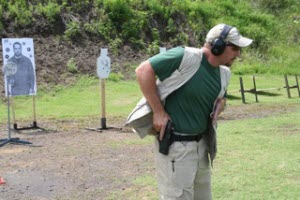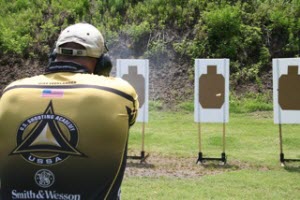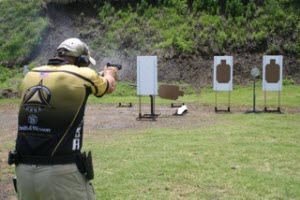In part 1 of this article, I tried to draw correlations between two areas (combative and competitive) in each of the five critical skill sets. My purpose was to outline how techniques used in either area relate, and more importantly how to train them. In this part, I will get into the weeds and discuss training concepts for each skill set. As a refresher of the skill sets, and to review the relationship we drew between each skill, you might want to review the table in part 1, and then read on so we can discuss specific training issues.
Now let’s talk about training each of the skill sets. When we talk about doing any sort of training, it is very important to remember that “correct design and perfect execution” of training sessions is the only true way to performance on demand. What does this mean? It emphasizes the critical importance of taking the time to make sure a training program or drill is properly designed for the exact purpose we want it to be, and that after the program is designed, we execute our training sessions with as much perfection as possible. These two simple steps will ensure that we don’t train “wrong” skills right or train “right” skills wrong. Either case will result in our learning (subconsciously ingraining) a technique improperly. And we can only expect ourselves to perform that technique incorrectly when we are forced to execute it under stress!
Let’s break down each skill set and list its training concepts.
Weapon Deployment
This process is more commonly known as the draw. Realize this: the draw may not always be from the holster. In both combative and competitive environments, we may find ourselves in a situation where we must deploy the weapon from somewhere other than the holster.
Training Concepts: Move fast, shoot in control. This simply means that, wherever the gun is, get to it quickly with your hand, and get it pointed at the target as fast as possible. When training, make sure you are moving both hands at the same speed (two move better than one). Learn where the right spots to index the gun are when grabbing the grip, and also when the support and strong hands meet, as this will help increase consistency. Focus on increasing the speed at which you can point the gun at the target, while attempting to see the sights as quickly as possible. Take whatever time you need to verify the sights (as much as needed to hit the target) prior to pressing the trigger. This will ensure that your subconscious learns the proper key to finalizing the trigger press.
High-Speed Marksmanship
I call this the firing cycle. When we shoot a gun multiple times (the case in both combative and competitive environments), we have to properly execute the firing cycle to ensure we are manipulating the trigger correctly.
Training Concepts: Learn the concept of prep and press. Prep (slack out) the trigger after the final firing grip is formed and as the gun is extended toward the target. Focus on resetting the trigger during recoil. Ultimately we should have the trigger released and reprepped before or at about the time the sights return to alignment on the target. Teach yourself to find the sights if necessary. Recognize the relationship between the front and rear sights more quickly by paying attention to the front sight and the light bars between the front and rear. Grip the gun hard (during dry fire too!) so you can increase the speed of the follow-up shot.
High-Speed Weapon Manipulation
This includes performing reloads, clearing malfunctions, and general gun-handling skills.
Training Concepts: This is all trained in dry (non-live) training sessions. Spend 90% of your manipulation training time dry to ingrain solid skills, and then validate them during live fire. Just like weapon deployment, find proper index points for each skill that will allow you to index things like the magazine to the magazine well consistently. Move fast, shoot in control … yes, the same rules apply here. When training reloads or malfunction drills, moving slowly will train your subconscious to perform slowly. Train (properly) at the speed you want to perform. Execute all techniques in the “power sphere,” that magical place in front of your face where you can see what you are doing.
Movement
This includes pivots, stepping turns, stepping offline, and shooting while moving in any direction.
Training Concepts: Move in a manner that allows you to end up in a balanced shooting stance. Smooth is not fast — fast is fast. Practice moving as fast as you can maintain control. Train at the speeds you want to perform at. Most people train at a completely different pace than they want to perform at. Training movement requires some fitness; don’t overlook this aspect of training. Learn to apply the elements of the firing cycle while moving and shooting, and focus on the key elements during training such as prepping and pressing the trigger.
Information Processing
This skill includes orienting, observing, deciding, and acting. This may mean recognizing a threat target and engaging it in a combative environment, or observing the action of a prop of some sort and reacting to it during a competitive match.
Training Concepts: Expose yourself to information overload situations as often as possible. Learn to see, think and act under stress. Reality-based training or competitive environments are the only places I know where we can train this skill. The brain can process huge amounts of information when trained to (think about driving a car). Most people who drive “practice” (drive) every day, sometimes in high-stress information processing scenarios (traffic). Imagine that same level of training with a firearm!
In closing, hopefully I have established some key relationships between combative and competitive environments in regard to using a handgun. The tips above will help you enhance your individual training sessions, but without some exposure to stress to validate your actions, you will never know if you can perform under stress. While there are many ways to expose yourself to stress, give competing a try! At best, you will enhance your skills far beyond what you may have thought possible, and guess what … you may have fun!






Share tips, start a discussion or ask one of our experts or other students a question.
Already a member? Sign in
No Responses to “Combative Applications of Competitive Techniques, Part 2”